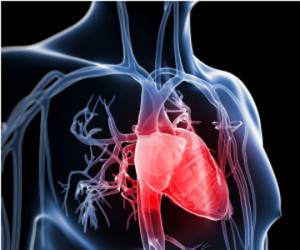- Home
- Editorial
- News
- Practice Guidelines
- Anesthesiology Guidelines
- Cancer Guidelines
- Cardiac Sciences Guidelines
- Critical Care Guidelines
- Dentistry Guidelines
- Dermatology Guidelines
- Diabetes and Endo Guidelines
- Diagnostics Guidelines
- ENT Guidelines
- Featured Practice Guidelines
- Gastroenterology Guidelines
- Geriatrics Guidelines
- Medicine Guidelines
- Nephrology Guidelines
- Neurosciences Guidelines
- Obs and Gynae Guidelines
- Ophthalmology Guidelines
- Orthopaedics Guidelines
- Paediatrics Guidelines
- Psychiatry Guidelines
- Pulmonology Guidelines
- Radiology Guidelines
- Surgery Guidelines
- Urology Guidelines
ABI, hsCRP, CAC not useful for assessing CVD risk in a symptomatic adults : USPSTF Recommendations

There is a popular belief that incorporating nontraditional risk factors may improve the performance of traditional multivariable risk assessment for heart disease/cardiovascular disease (CVD).The United States Preventive Services Task Force (USPSTF) has tried to provide evidence to currently assess the benefits and risks of adding nontraditional cardiovascular risk factors—ankle-brachial index (ABI), high-sensitivity C-reactive protein (hsCRP), and coronary artery calcium (CAC) screening—to traditional methods of risk assessment in asymptomatic adults.
U.S. Preventive Services Task Force (USPSTF) has provided Recommendation Statements based on a systematic review of current evidence to determine whether there is sufficient evidence to recommend the routine use of nontraditional risk factors like ankle-brachial index (ABI), high-sensitivity C-reactive protein (hsCRP), or coronary artery calcium (CAC) score measurement in clinical risk assessment and decision making. It has tried to address two important issues: First, do these markers improve the performance of risk scores (discrimination and reclassification)? And second, whether use of these markers improve clinical outcomes?
U.S. Preventive Services Task Force (USPSTF) in its two new statements has concluded that current evidence is insufficient to make recommendations assessing cardiovascular disease (CVD) risk with certain nontraditional risk factors and screening for peripheral artery disease (PAD) and CVD risk with the ankle-brachial index (ABI). The recommendation states-
- Evidence is insufficient to make a recommendation regarding screening for PAD and CVD risk with the ABI in asymptomatic adults.
- Evidence is insufficient to make a recommendation regarding adding the nontraditional risk factors of the ABI, high-sensitivity C-reactive protein (hsCRP) level, and coronary artery calcium (CAC) score to traditional risk assessments for CVD in asymptomatic adults to prevent CVD events.
According to U.S. Preventive Services Task Force (USPSTF) there are not sufficient clinical trials to evaluate the incremental effect of the ABI, hsCRP level, or CAC score in risk assessment and initiation of preventive therapy.In addition to this the clinical meaning of improvements in measures of calibration, discrimination, and reclassification risk prediction studies is uncertain.
For further reference log on to :

Disclaimer: This site is primarily intended for healthcare professionals. Any content/information on this website does not replace the advice of medical and/or health professionals and should not be construed as medical/diagnostic advice/endorsement or prescription. Use of this site is subject to our terms of use, privacy policy, advertisement policy. © 2020 Minerva Medical Treatment Pvt Ltd